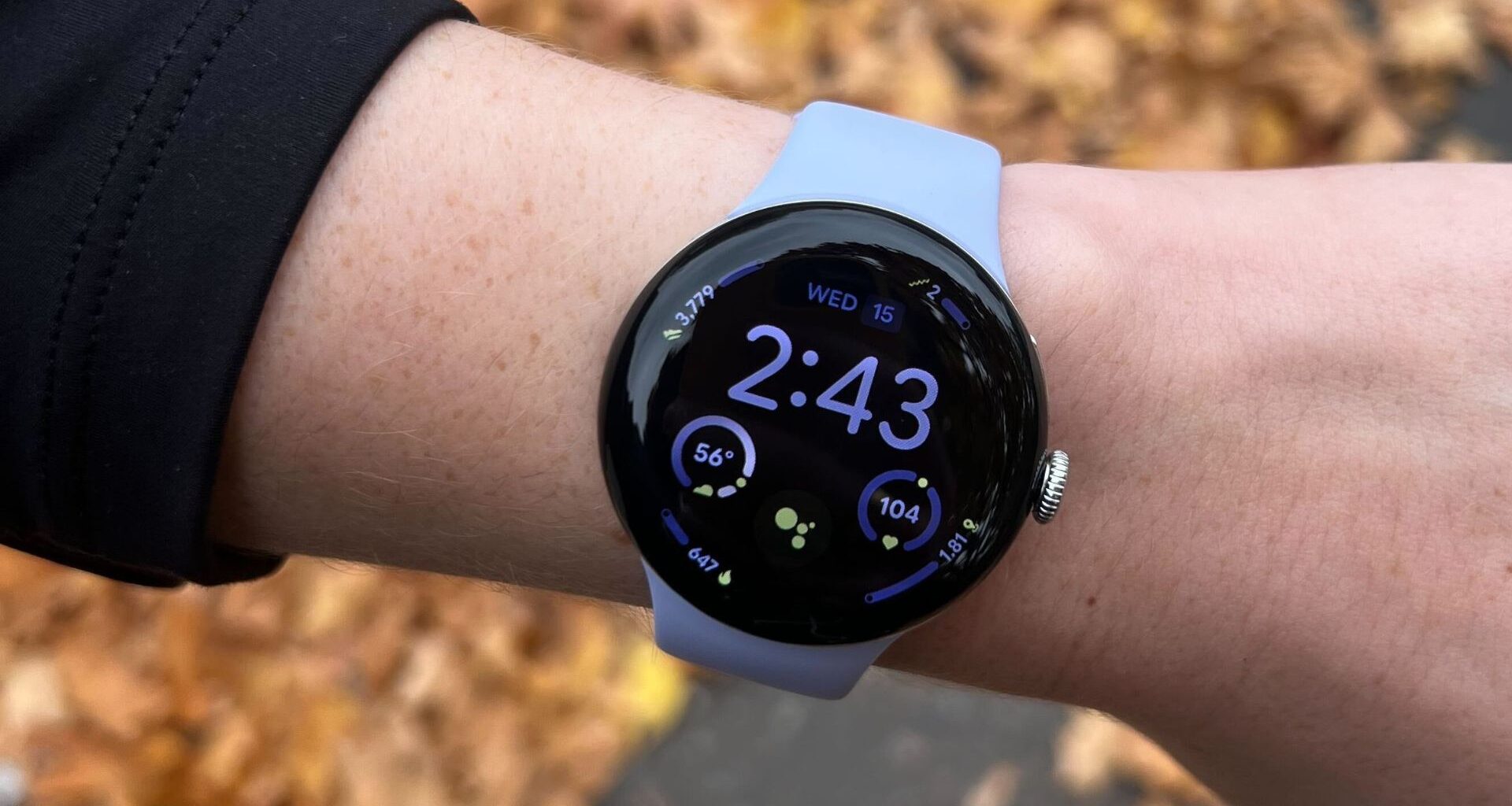I’ve dabbled with fitness trackers for the last five years, but I haven’t ever opened a box and been so impressed at first sight as with the Google Pixel Watch 4. It’s a stunning design, with the unique purple colourway I had and a domed crystal screen making it look like as much of an art piece as a smartwatch.
But with the Google Pixel Watch 3 only released last year, would it be worth upgrading to this new watch, and does it score a place on the list of the best fitness trackers? I took it for a spin for a month to find out.
Best picks for you
Google Pixel Watch 4 reviewSpecificationsSize: 41 mm x 12.3 mm (41mm) or 45 mm x 12.3 mm (45mm)Weight: 31g (41mm) or 36.7g (45mm)Material: Recycled aluminium with a silicone bandCharging time: About 45 minutes to 100%GPS: Yes, dual-frequencyWaterproof: No, water resistant up to 5 ATM
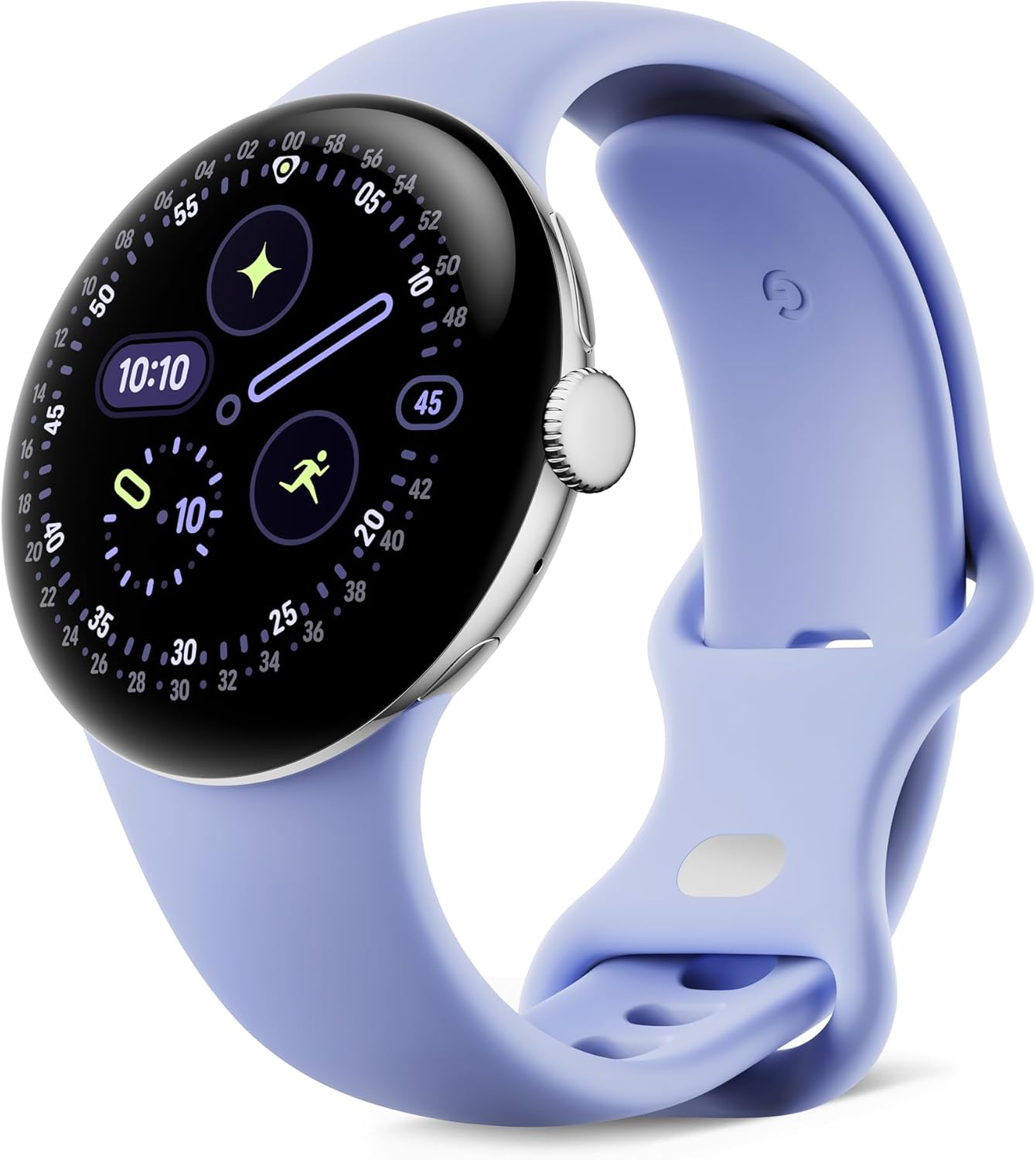
Pixel Watch 4 (41mm)
I tested the 41mm Google Pixel Watch 4, which I found large enough to cover my wrist and view all the data without the words and numbers on the screen feeling cramped. While those with larger wrists might prefer the larger size, this was perfect for me.
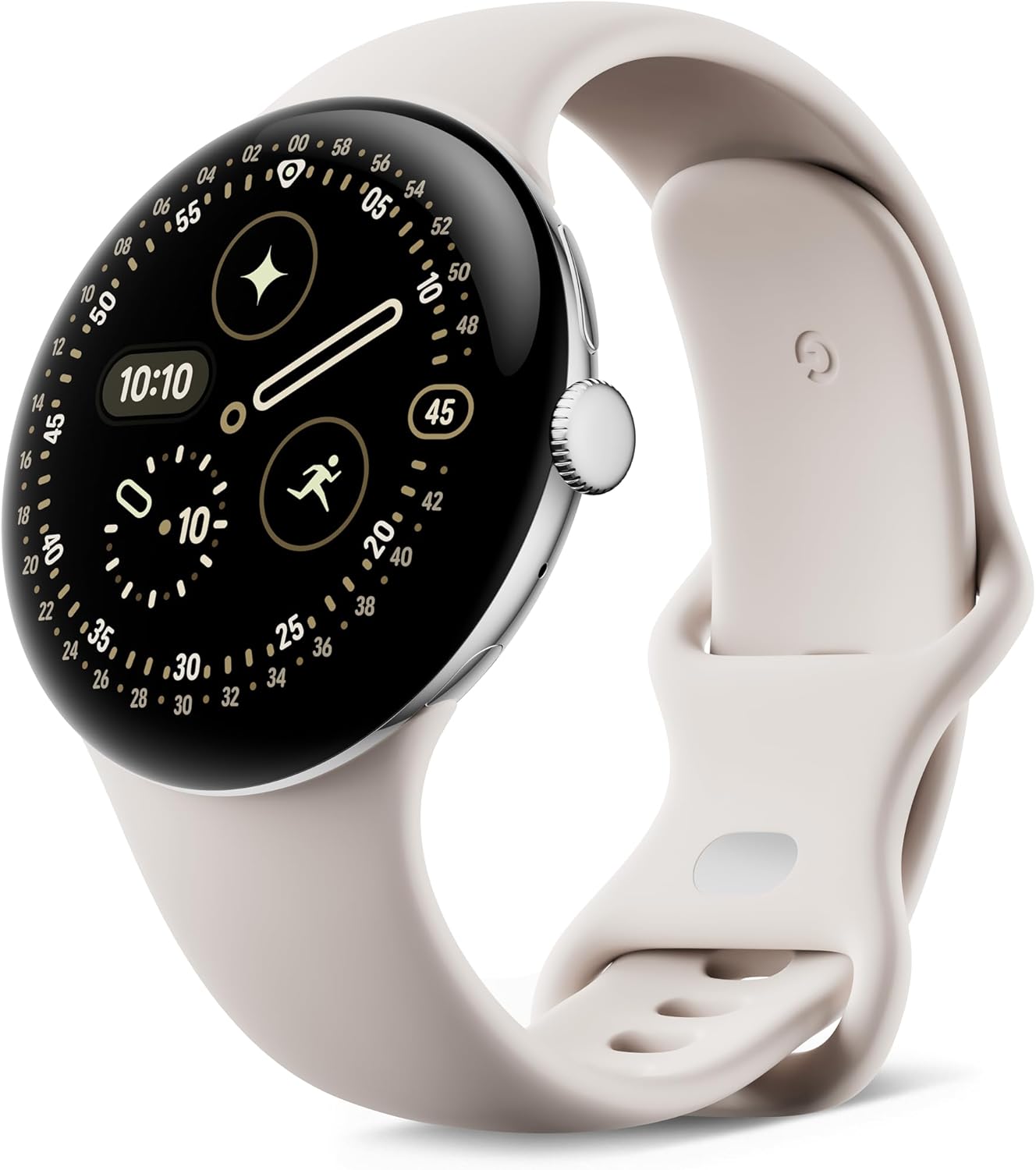
Pixel Watch 4 (45mm)
The main difference between the 41mm and 45mm watches is the size and the weight of the watch face, with the small option coming at 31g and the larger sitting on the wrist at 36g. While it might not feel like a big difference, it’s worth considering if you do a lot of walking and running as the larger one will feel heavier on the wrist.
Design and size of the Google Pixel Watch 4
If you’re familiar with the Google Pixel Watch 3, then you’ll recognise the Watch 4’s sleek and elevated look. There’s not too much difference between the two, except that the bezel size on the newer model is slightly smaller, so you get even more screen for the size.
The Google Pixel Watch 4 sits slightly raised on the wrist thanks to the dome-shaped crystal and has a haptic crown that you scroll to navigate around when you’re not using the touchscreen. Together, they made the watch feel a little bulky at first, but I got used to the feeling, and the dome design makes the screen easier to view at a glance.
Like all Google watches and some of the best Fitbits – like the Fitbit Sense 2 and Versa 4 – the Pixel Watch 4 comes with a silicone infinity loop strap and is available in multiple colours.
The purple colourway is one of my absolute favourites, of all the fitness trackers I’ve ever worn. I’m so used to neutral palettes, the pop of colour was a welcome sight. There are also other colourways to choose from, including dark grey, porcelain, black, champagne gold, and black.
Fitness tracking on the Google Pixel Watch 4
Over my month with the Google Pixel Watch 4, I went on an 8,000-step walk every day (about 4,000 steps to work and 4,000 steps home). I also wore the watch during strength training, my weekly 10km run, and in my at-home Pilates workouts to see how it fared in all fitness environments. I’m not a fan of swimming, so I gave that a miss, but I have it on good authority that the watch does well in the pool, too. It has a locking feature on all workout modes to prevent you from accidentally bumping it and ending/pausing your workout on the move, which is a bonus no matter your chosen activity.
First things first, this watch is very accurate. I had to wear it for a couple of days for it to truly sync in with my step count, but some watches don’t get this right for months – if ever. During testing, I compared it with my Coros Pace 3, as I’ve been wearing this watch for over six months, so it’s attuned to my step count and regular heart rate.
Side by side, they recorded just shy of a 100-step difference and 0.1 km distance, which is impressive, and a big improvement from the Pixel Watch 3, which I found struggled in this area. I might have to thank the upgraded GPS for this, which has an antenna with two bands instead of the regular one, and is better for built-up cities and dense forests (I live in the former, unfortunately).
I found it very easy to navigate to the 40 various workout modes via the Quick Start page – one swipe from the homescren – and to start, pause, and stop my workout. Like most fitness trackers, you’ll get a live readout of your basic data during the workout. For walking, I saw my distance, speed, step count, and heart rate, and then I saw an overview of my session in the Fitbit app.
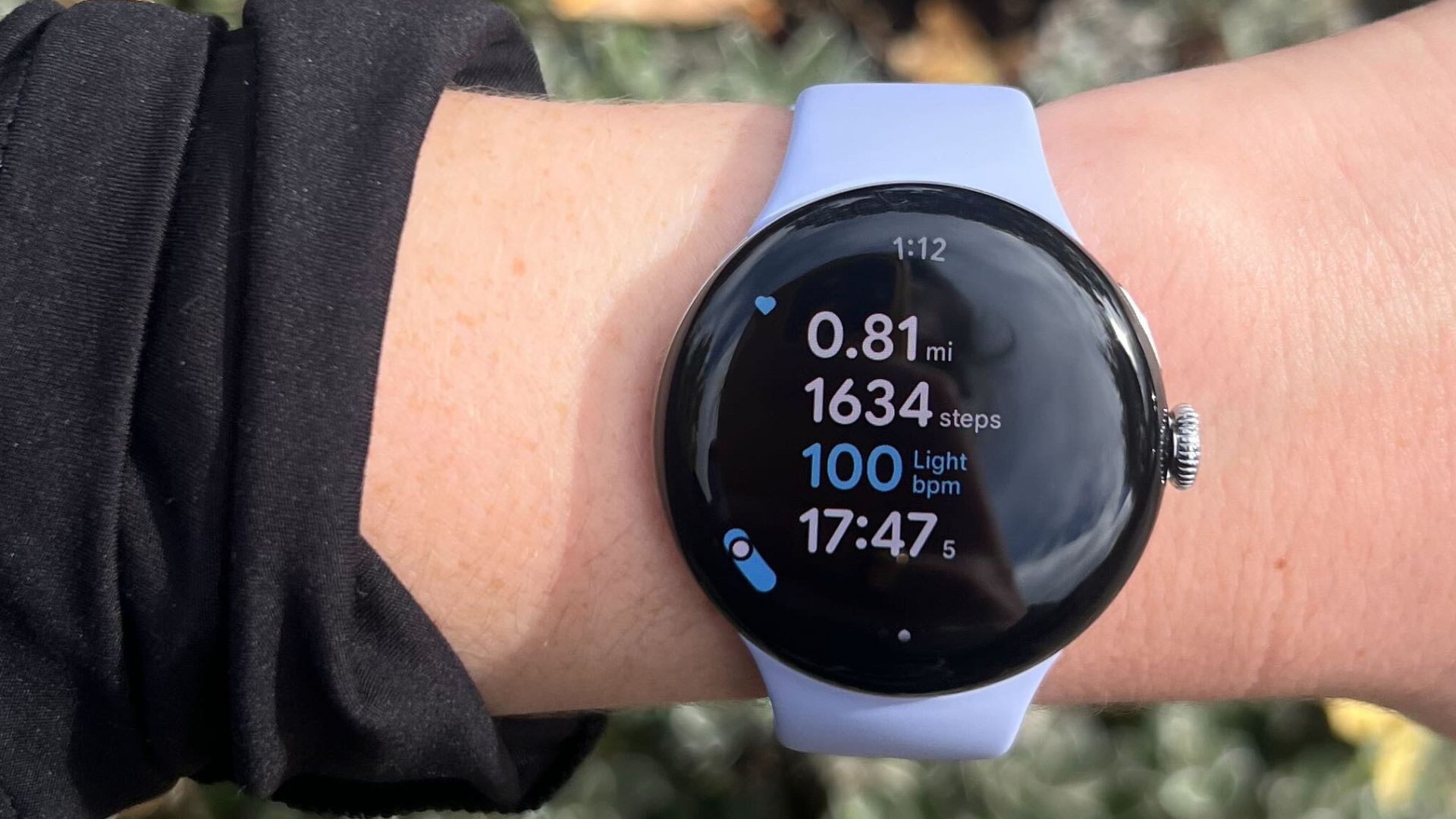
The Google Pixel Watch 4 has key live data on the wrist at all times, and you can lock the screen with a button on the next screen along from this one.
(Image credit: Grace Walsh / Future)
Overall, I like the Fitbit app – and I like Fitbit Premium especially – but I did find the Google Pixel Watch 4 tricky to set up in the Fitbit app. After a bit of back and forth with various Gmail addresses, I had it sorted, but it wasn’t a seamless process. In the future, it would be ideal if the Google Pixel Watch could connect straight to the Fitbit app, without having to go through its own app first.
Another small downside I noted was the strength training workout mode. In other watches (including the Coros Pace 3 and the Garmin Vivoactive 6, which sit at a similar price point), the strength training mode automatically counts repetitions of exercises, and you can log your sets. You still get your heart rate zone, calories, timer, and zone minutes in the mode, and you control any music playing from your phone, so it’s very useful – but no different from other non-cardio profiles on the watch.
Sleep and health tracking
While the Oura Ring 4 is my favourite sleep tracker, the Google Pixel Watch 4 is up there with the best of them. With an upgraded skin temperature sensor making these readings 18% more accurate than the Pixel Watch 3, and sleep reports highlighting duration, quality, type of sleep (REM, deep, and light), resting heart rate, and restlessness throughout the night, the data on this watch isn’t to be sniffed at.
Once you’ve worn the watch for 30 days, you can get an overall data benchmark and see how your sleep on any given night compares to your average sleep score.
With the Google smartwatches, you also get access to the Daily Readiness Score without needing a Fitbit Premium subscription. If you do a lot of exercise, have a stressful job, or struggle to balance the pressures in your life, this can be a useful piece of data to help you rest better. Taking sleep, recovery, and movement data into account, you’ll get a score every day that’ll predict your capabilities and advise on the right action. That could be to exercise, take a rest day, or get more sleep.
While many people don’t like their tracker telling them what to do, it’s the device with all the information, so I love having this feature as an on-wrist coach to help me optimise my routine.
Smartwatch features and AI on the Google Pixel Watch 4
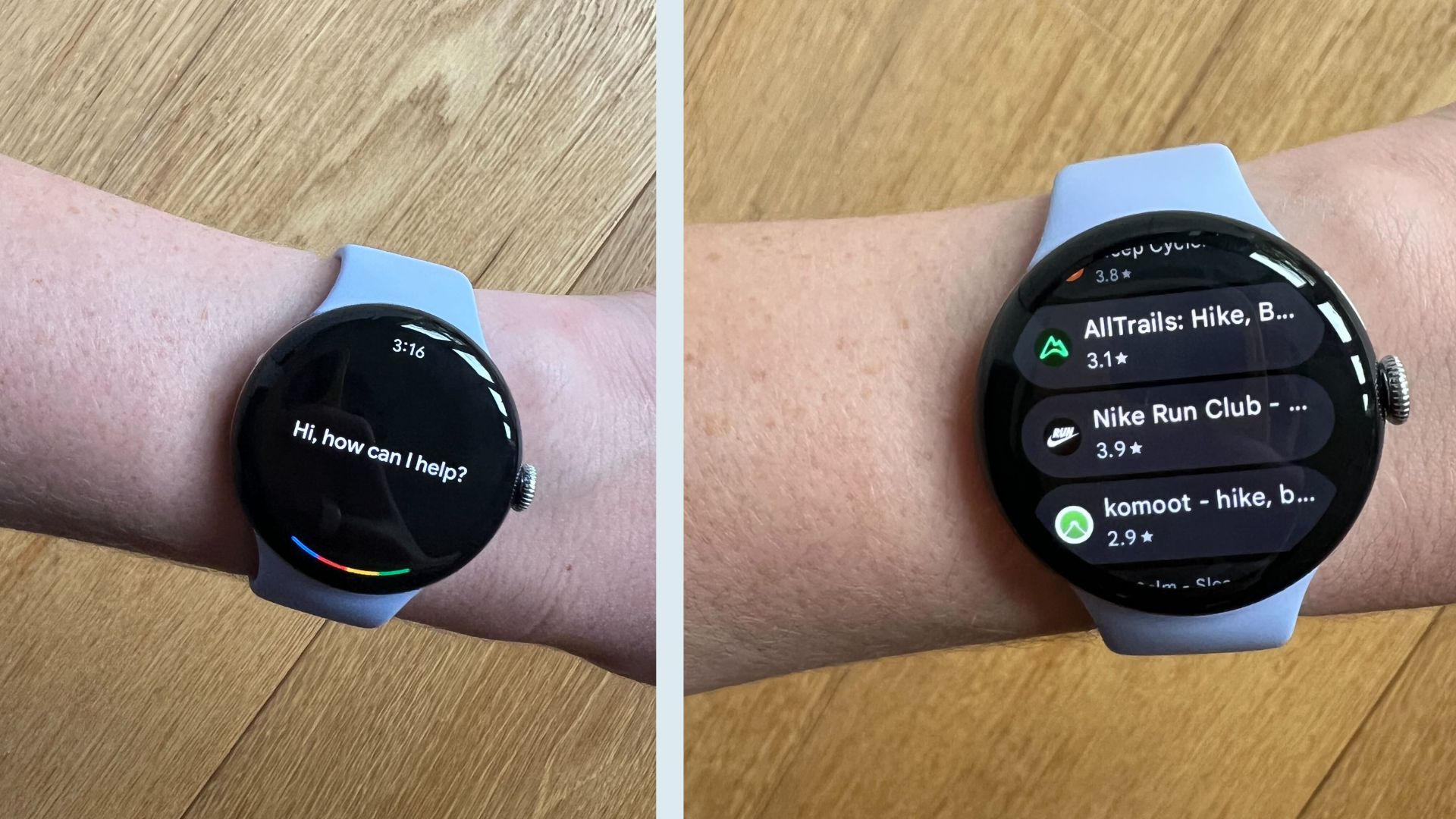
Gemini is built into the Google Pixel Watch 4 and you can download third-party apps to make life easier on your wrist.
(Image credit: Grace Walsh / Future)
Where the Google Pixel Watch 4 truly comes into its own is in the smartwatch features and improved integration with Gemini, Google’s AI. The Pixel Watch 3 had Gemini integration, but the newer model allows you to simply raise your wrist to wake up the bot.
Initially, I was concerned that I’d be getting Google’s help when I didn’t want it by triggering it accidentally, but you can (thankfully) decide how sensitive you want it to be. If you accidentally enable it, it’ll turn off if you don’t respond for a few moments.
I was most impressed by the advanced reply features. For example, I was meeting a friend for breakfast recently, and train delays meant I was going to be late. My friend texted to say she’d got us the table, and I had Gemini look at my route (as I stomped furiously through Victoria train station in London), my calendar, and my location, and send a precise reply. “I’m running 15 minutes late,” it read. A little blunt, sure, but it got the message across.
The Google Pixel Watch 4 is also packed with loads of smartwatch features that don’t use any AI at all. Much like the Fitbit Charge 6 and Sense 2, you’ll find complete integration with Google’s suite of products, including Gmail, Calendar, Maps, and Wallet, making it easy to navigate routes without taking out your phone, pay with a tap of the wrist, and reply to emails on the go.
With third-party apps available to download from the Google Store as well, it’s such a versatile fitness tracker and smartwatch hybrid, just as suitable as a lifestyle assistant as a way to track your workouts, sleep, stress, and more.
Battery and charging
Ok, I have some good and bad news for you here. The good news is that the battery life on the Google Pixel Watch 4 is longer than the previous model, offering 48 hours with Battery Saver mode and 30 hours with always-on mode.
It also charges (via a fancy new standing charger) faster than ever, going from 0% to 100% in 45 minutes in the smaller-sized watch, which is certainly faster than most other fitness trackers I’ve worn.
However, it’s still not as good as any of the best Garmin watches or any Fitbits, which boast a week-long battery life at a minimum, so it’s worth weighing up the Google Pixel Watch vs Fitbit before making a decision.
While it’s very easy to charge the Pixel Watch 3 with the new and improved standing charge point, you’ll still have to do it every other day or so, bringing it in line with the latest Apple Watch.
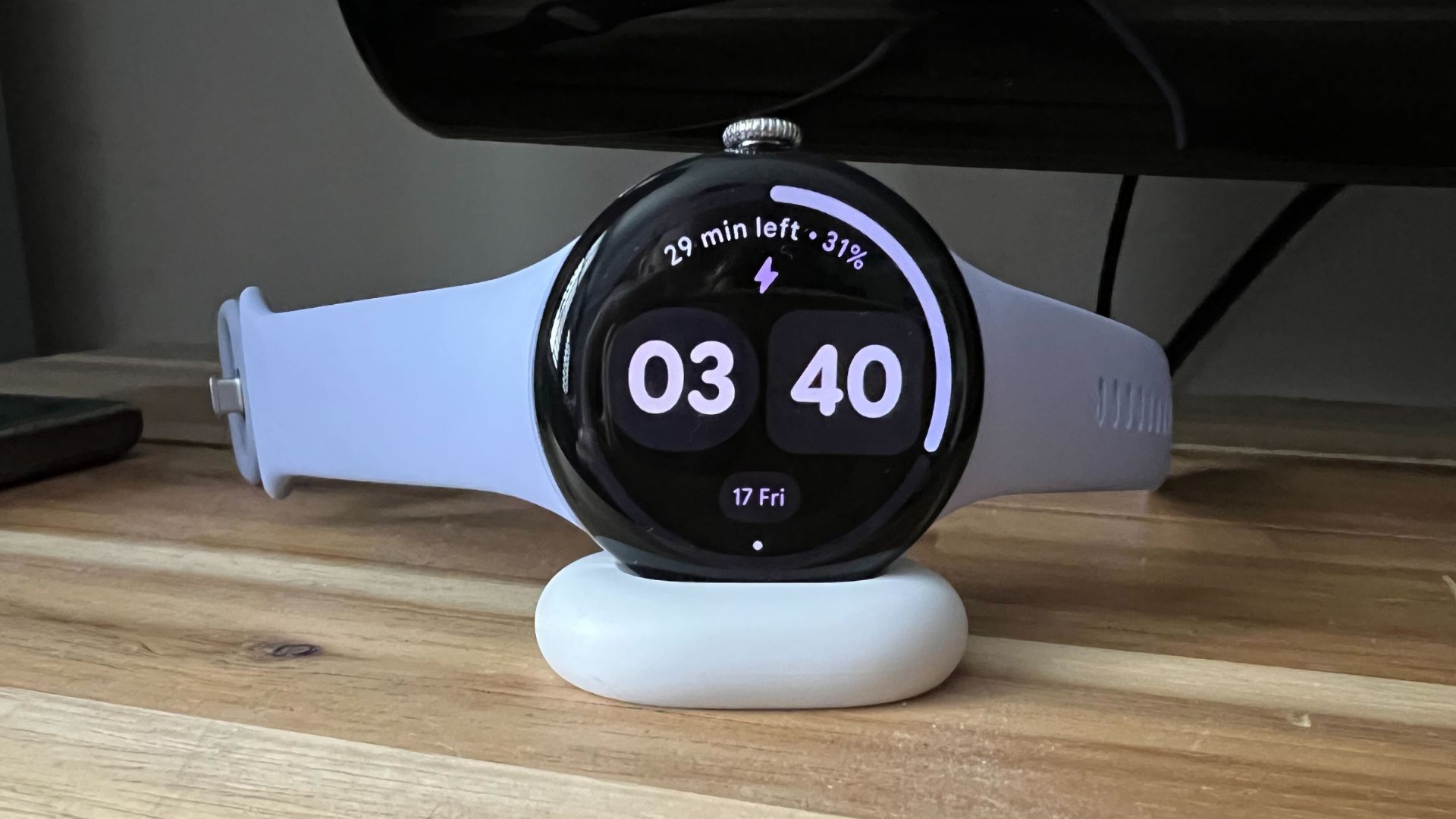
The Google Pixel Watch 4 might not have a long battery life, but it charges to 100% in 45 minutes.
(Image credit: Grace Walsh / Future)
Price of the Google Pixel Watch 4
The Google Pixel Watch 4 is available from £349 for the 41mm option, with the 45mm coming in at £399. It’s available to buy directly from the Google Store or via third-party retailers like Argos, John Lewis, Amazon, and Currys.
Ways to save on the upgrade include finding the Pixel Watch 4 in some of the better Fitbit deals over seasonal sales periods, like Black Friday, or shopping directly. If you shop directly on the Google Store and you have a Pixel Watch 2 right now to trade in, you can save £81.
Google Pixel Watch 4 vs 3Design: It’s hard to tell the Google Pixel Watch 4 from the newer model when you look at the specs, but the newer model has fractionally more screen space on the wrist. It also has a new dome crystal face that makes it easy to view stats and features at a glance.Display: The Google Pixel Watch 4 has a brighter screen (3,000 nits vs 2,000 nits), but you can lower it to as few as one nits for disruption-free use in the cinema or at nighttime.Smartwatch features: The key difference between the two is the new Gemini features. On the Watch 4, you can simply raise your wrist to speak to the AI but on the former, you’ll have to say ‘hey, Google’ out loud, which isn’t ideal in public.GPS: The Google Pixel Watch 3 and 4 have excellent GPS and good accuracy, but the newer model has dual-band, which is the better option for those in cities and dense areas, like forests and woodland.Barometric Altimeter: That’s a floor or elevation counter to you and me, and both watches have one.Battery and charging: You’ll get 12 more hours of life in battery saver mode with the Pixel Watch 4 (38 hours vs 48 hours or 72 hours with the 45mm), and six more hours in always-on mode. The newer watch also takes 15 minutes less to get from 0% to full power.Is Google Pixel watch compatible with iPhone?
No, Apple users will have to look to the Apple Watch Series 10 or 11, or one of the other smartwatch options, to get their data. The Google Pixel Watch 4 isn’t compatible with the iPhone.
To use the Google Pixel Watch (any model), you have to be able to download the Pixel Watch app, which isn’t available on the Apple App Store. It also will not connect directly via Bluetooth.

